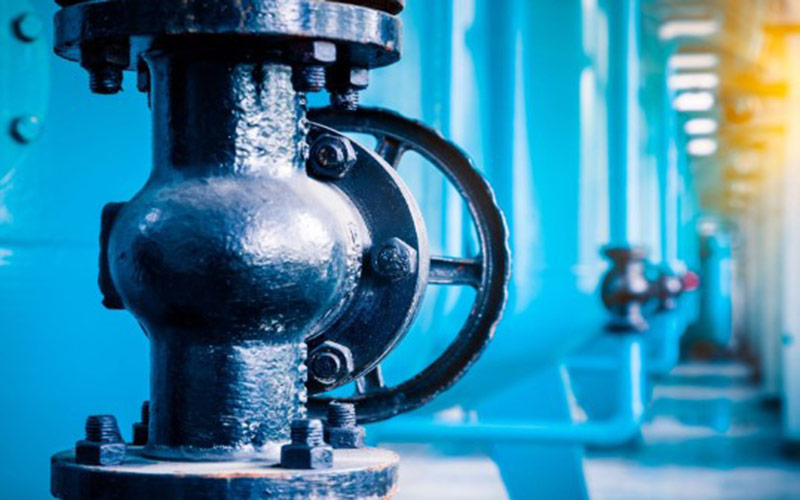When it comes to the world of manufacturing, ball valves are a staple in many different industries. But what are they? And how do they work?
In its simplest form, a ball valve is a device that uses a rotating ball to control the flow of liquids or gases through a pipe. The valve is opened and closed by turning the ball either with your hand or with an actuator.
This post will explore the basics of how a 3 way ball valve works, and discuss some of their critical applications in fields like medical injection molding and automobile parts suppliers.

Table of Contents
A 3-Way Ball Valve: What Does It Do?
The 3-way ball valve is a type of valve used to regulate the flow of fluids through a system.
It consists of a ball with three ports connected to the inlet, outlet, and exhaust ports. The ball rotates so that the ports line up with the desired path of travel for the fluid.
The 3-way ball valve can be used in various applications, such as controlling water flow in a plumbing system or regulating oil flow in an industrial process.
In each application, the valve works by redirecting fluid flow through its ports. By doing this, the three-way ball valve can precisely control the direction and amount of fluid that flows through it.
Different Types Of 3-Way Ball Valves: What Are They?
3-way ball valves are a vital component of many industrial and commercial systems.
There are two main types of 3-way ball valves: L-Port and T-Port.
L-Ports can direct flow in one direction or turn it off completely.
All the functions of an L-Port are available on a T-Port, but the T-Port cannot be turned off or snubbed. Furthermore, the T-Port supports mixing flows by sending and receiving flows to and from both valve ways.
Understanding how these valves work is vital for ensuring that your system operates correctly and safely. By understanding what type of valve you’re using and its applications, you’ll be able to troubleshoot any issues quickly and efficiently.
How To Select A 3-Way Ball Valve?
Various applications use 3-way ball valves, including water distribution, air conditioning and refrigeration, gas and oil pipelines, wastewater treatment plants, and chemical processing.
They come in many shapes and sizes to meet the specific needs of your application. When selecting a 3-way ball valve, you need to consider the following factors:
- Type of fluid flow (vacuum or pressure)
- Size and shape of the valve body
- Operating range (inlet/outlet)
- Installation requirements
- Price
The Most Common Applications For A 3-Way Ball Valve
There are numerous applications for a 3-way ball valve in commercial and residential settings. Let’s find out.
1. Health Industry
A 3-way ball valve is a type of valve that allows fluid to flow in three directions. The health industry uses this type of valve is often used in, specifically in medical injection molding.
Medical injection molding is a process that uses plastic to create products such as syringes, IV catheters, and other medical equipment.
Medical injection molding companies can use a 3-way ball valve to ensure that the products they produce are consistent and accurate. This is because the valves help to allow precise control over the pressure applied to the material being injected into the system.
3-way ball valves are essential to the medical injection molding process. They have helped make it possible for companies to produce high-quality medical devices that are reliable and safe.
2. Automobile Industry
3-way ball valves are a crucial component of automotive manufacturers, as they allow for efficient fluid flow between different automobile systems. They’re also an advantage for any automobile parts supplier, allowing quick and easy repairs.
Why Choose A 3-Way Ball Valve Over Other Types Of Valves?
When it comes to choosing the suitable valve for your application, there are a few things you need to consider.
First and foremost, you’ll want to ensure that the valve can handle your system’s pressure and flow requirements.
Second, you’ll want to choose a valve type compatible with your pipeline design. And finally, you’ll want to decide on the specific features that are most important to you.
When it comes to ball valves, 3-way ball valves offer many advantages over other types of valves.
They are typically easier and faster to operate, making them ideal for high-volume applications. They also have greater flexibility regarding pipeline design because you can fit them into any configuration.
And lastly, 3-way ball valves come with various unique features that can improve performance or safety in specific applications.
So if you need a versatile valve that can handle high pressures and flows, is compatible with your pipeline design, and offers some extra benefits like flexibility or quick operation, choose a 3-way ball valve.
Follow – https://viraldigimedia.com for More Updates